The Open Range Multi-Table tool is especially useful if you play on different tables. For example, imagine you're playing a tournament, but also a cash game table. At several points during your session, you'll want to know whether or not you can open a hand in a given situation. Rather than using two web pages to get your results (one for the cash game, one for your tournament), you can take advantage of this tool, which will give you your results for each table. So it's easier for you.
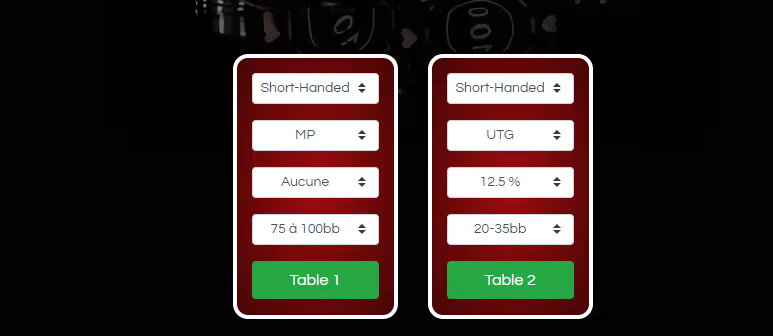
For example, here on the left, you have a short-handed cash game table (6-max) with a full stack (100 bb). On the right, you have your tournament table with antes to pay. What's more, as the tournament is quite advanced, you have between 20 and 35 big blinds.
The use of this tool, like all tools on the push-or-fold.com, is very simple and intuitive.
First, choose your table type:
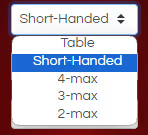
For the current example, we'll be in 6-max (short-handed).
Then choose your position on the table:
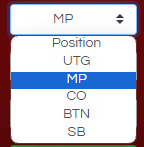
Here, we'll be in the MP (middle position).
Since we're playing cash games, we won't have any antes to pay, so we'll be indicating none.
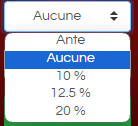
Finally, we'll indicate the size of our stack in blinds. Since we'll have a full stack (always advisable when playing cash games), we'll choose option 100 bb).
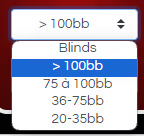
You can do the same with Table 2 by entering your tournament details. When you click on "Table 1" or "Table 2", you'll get the opening range for the given situation:

You can toggle between tables by clicking on "Table 1" and "Table 2" alternately.
The opening ranges you see are GTO (Game Theory Optimal) ranges.
Don't forget to consult the color chart to find out how to play the specific hands in the chart.

The hands in red are the top hands in our range. With these hands, we'll never back down and we'll play aggressively. If a player 3-bets us, we'll 4-bet. If a player 5-bets us, we'll push all in. Hands in green will be our 4-bet bluff hands. The reason we'll choose matching aces here is that we'll have plenty of fold equity. By having an ace in hand, we know that the chances of our opponent having AA are much lower. If a player pushes all in after our 4-bet, it's a safe bet that his hand will far dominate our hand. So, even if you have 4-bet, you'll have peace of mind. It's also worth bearing in mind that 4-bets will make our opponents fold at a high frequency, and every time our opponents fold, we win a considerable pot without needing to go to the showdown. In the long term, these bluffs will be profitable, as well as making you harder to play and less predictable. The hands in gray will be the most marginal hands to play. When should you play them?
On an aggressive table full of good players, you can simply fold these hands. But if you're on a table full of passive players and you feel confident, you'll be able to open them with no problem. The hands will have very slim profitability in the long term, if not neutral, but if you have a skill advantage over your opponents, you can probably make them profitable.

